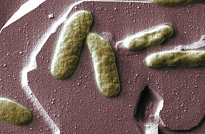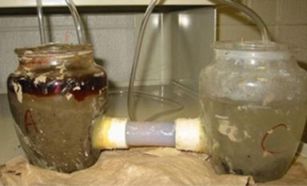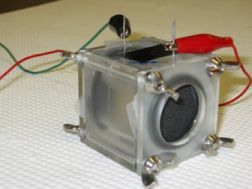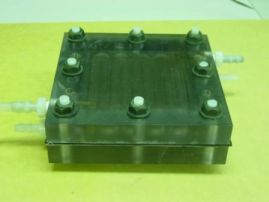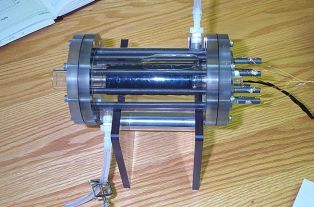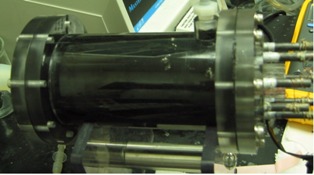Boston University/Why Shewie
From 2007.igem.org
Contents |
Reasons for Working with Shewy
Flexible Metabolism
- Electrogenic microbes are microscopic organisms that have evolved the ability to breakdown organic or chemical material, extract electrons from the material, and pass those electrons to extracellular organic or inorganic substrates such as Fe(III) or graphite electrodes. In particular, we will be working with the electrogenic microbe Shewanella oneidensis.
- In S. oneidensis, electron donors for respiration can range from lactate to pyruvate to amino acids, while possible electron acceptors include Mn(III), Fe(III), oxygen, and a variety of naturally insoluble compounds. This versatility in metabolism is what makes S. oneidensis a prime candidate for tasks such as bioremediation and electrogenesis. Considering the ever-increasing need to develop alternative energy sources in today's world, Shewy's potential role as a provider of electricity demands investigation.
Mapped Regulatory Network
- The bacterium S. oneidensis, like all organisms, can trace its metabolic functions back to the proteins which are involved in its respiration. These proteins, in turn, are manufactured according to the data contained in the genes of the organism. It is transcription factor proteins which read this data, thereby stimulating or repressing the rate of gene transcription of respiratory proteins; and thus modulating the current output.
- A wide base of knowledge assembled on S. oneidensis' regulatory network in the past few years. Previous work in the Gardner Laboratory at Boston University has produced a map of 800 regulatory interactions controlling metabolism and electron transport in S. oneidensis transcription networks. These transcription networks contain a complete listing of which proteins control synthesis of other proteins. This wealth of information provided the basis for our project, in terms of the genes we will be targetting and the effects on Shewy metabolism that we hope to observe.
- More specifically, the mappings indicated that the transcription regulators affecting the largest number of genes are SO1415, ttrR, and hlyU. Because of their global regulatory role, we propose that the mutation and engineering of these three genes have a high chance of affecting S. oneidensis’, and enhancing electrogenic output. It is the objective of this work to employ directed mutagenesis and selection to obtain mutants of these genes that enhance current output in the organism.
Microbial Fuel Cells (MFCs)
Bioremediation
Wastewater treatment is a particularly effective use of the S. oneidensis. The bacterium’s ability to utilize a wide-range of electron donors and acceptors allows it to simultaneously detoxify the waste and generate current. Such capabilities mean that one day, water treatment facilities may be able to generate power to run themselves and nearby homes and businesses. Or more generally, S. oneidensis could be used as a multi-purpose current generator which accepts a wide variety of fuel types.
